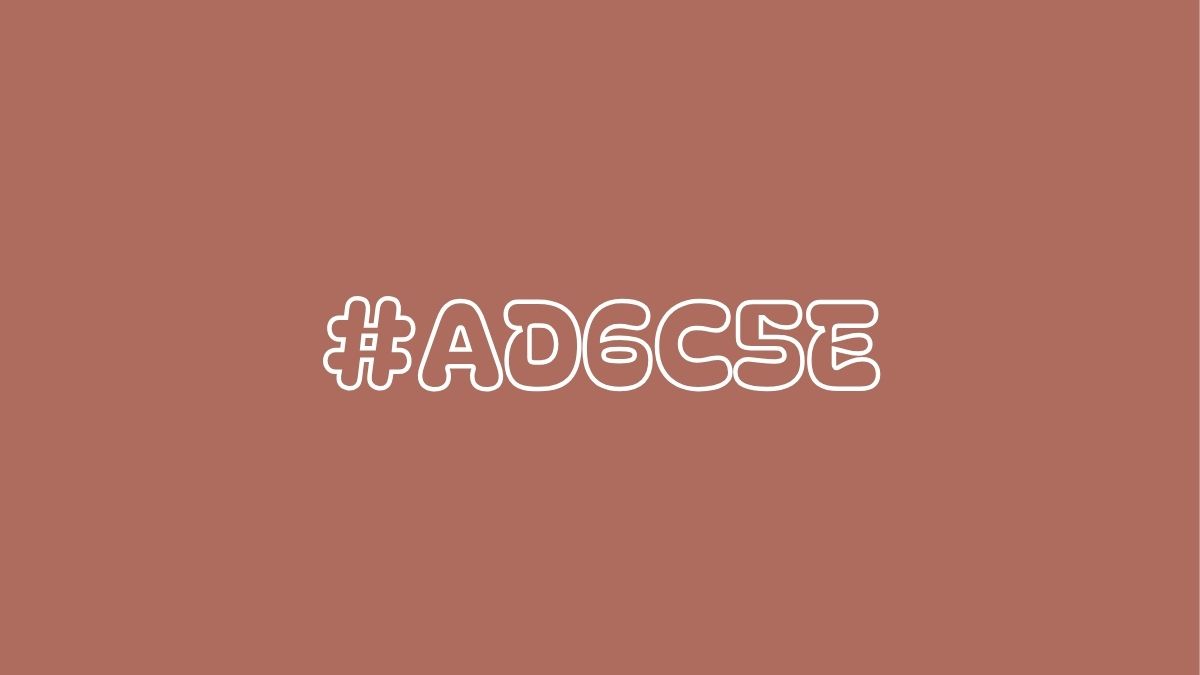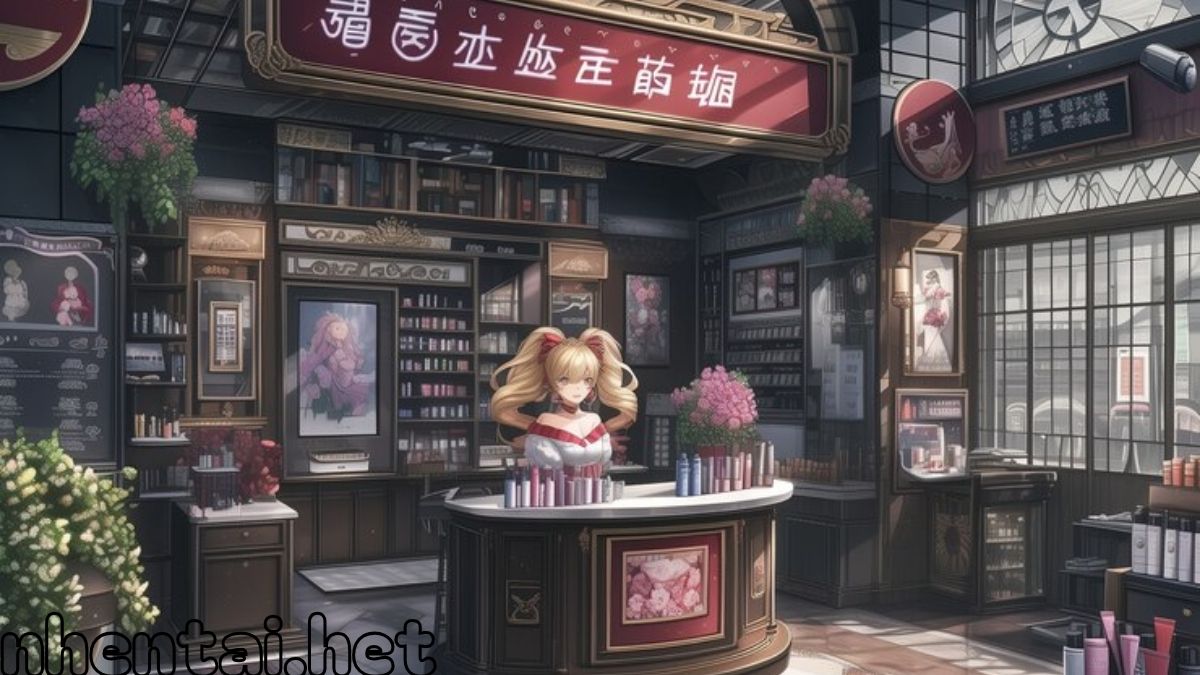The hexadecimal code AD6C5E represents a distinctive and earthy shade that lies between muted brown and reddish undertones. This warm color is both inviting and elegant, making it a popular choice in design and creativity. Its appeal lies in its subtlety and versatility, which allows it to evoke a sense of comfort while still standing out in various palettes. AD6C5E Colour unique composition in the hexadecimal color model consists of three pairs of values that define its red, green, and blue (RGB) components. Specifically, AD translates to 173 in decimal, 6C corresponds to 108, and 5E equals 94. Together, these values form a hue that is both harmonious and rich.
In design contexts, AD6C5E excels due to its ability to blend seamlessly with other colors while maintaining its identity. It is not overpowering yet creates a sense of depth and balance when incorporated into projects. Its warmth, rooted in its reddish-brown undertones, makes it a popular choice for natural and calming themes.
AD6C5E in Interior Design
In interior design, AD6C5E is a star player for those aiming to create cozy and inviting spaces. Its earthy tones pair beautifully with wooden furniture, soft fabrics, and natural elements like stone or clay. Designers often use this color to craft interiors that exude warmth and a homely ambiance. For instance, living rooms painted in AD6C5E can feel enveloping and comfortable, while accent walls in this hue bring a touch of sophistication.
This shade is particularly effective in creating specific moods. When combined with soft lighting, it can make spaces feel more intimate and relaxing. AD6C5E also works well in study rooms or libraries, where its subdued nature helps maintain focus without being distracting. For those who enjoy experimenting, pairing AD6C5E with neutral tones like beige or cream can further enhance its calming effects.
MUST READ: nveiling Bunkralbum: A Deep Dive into Digital Storytelling
The Role of AD6C5E in Branding
In branding, AD6C5E Colour serves as more than just a color; it becomes a statement. Earthy tones like this are often chosen by brands looking to convey reliability, warmth, and authenticity. It is particularly common among eco-conscious brands or those targeting consumers who value sustainability and natural living.
The psychological impact of AD6C5E cannot be overstated. It is a color that communicates trust and stability, making it appealing for companies wanting to establish a grounded and approachable image. Many successful brands use hues similar to AD6C5E in their logos, packaging, or marketing materials. For instance, organic food brands, skincare companies, and artisanal product lines frequently incorporate this shade to signify natural and wholesome qualities.
AD6C5E in Fashion
Fashion trends often reflect seasonal changes, and AD6C5E is no exception. This warm, earthy tone is especially popular during autumn and winter, echoing the natural shades of falling leaves and cozy landscapes. It brings a sense of comfort and style, making it a favorite among designers and consumers alike.
Pairing AD6C5E Colour with other colors in fashion opens up a world of possibilities. It works well with muted greens, deep blues, and soft golds, creating harmonious combinations for clothing and accessories. For instance, an AD6C5E sweater paired with olive green pants can create a chic and understated outfit. The color is also versatile enough to be used in both casual and formal wear, from scarves and coats to evening dresses.
Technical Aspects of AD6C5E
From a technical perspective, AD6C5E’s composition makes it a versatile choice for both digital and print mediums. The RGB breakdown of 173, 108, and 94 gives it a warm and slightly desaturated look, ensuring it doesn’t overpower other elements in a design. This balance makes AD6C5E Colour a favorite among graphic designers who value subtlety and harmony in their work.
When working with AD6C5E, understanding its complementary colors is key. Shades of soft teal, light cream, or deep charcoal can create visually appealing contrasts, while analogous colors like burnt orange and warm beige maintain a cohesive palette. Adjustments in saturation and brightness can further tailor AD6C5E Colour to specific needs, such as making it more vibrant for digital use or softer for print materials.
Using AD6C5E in Digital Design
Digital design offers endless opportunities for incorporating AD6C5E. Tools like Adobe Color or Canva make it easy to explore palettes featuring this shade. Designers can experiment with complementary, triadic, or analogous combinations to find the perfect match for their projects.
AD6C5E is particularly effective in creating warm and inviting websites. It works well as a background color or as part of a gradient to add depth to layouts. When used sparingly, such as in buttons or icons, it draws attention without being overwhelming. Adjustments for web-specific requirements, such as optimizing contrast ratios for accessibility, ensure AD6C5E Colour remains user-friendly.
AD6C5E’s Timeless Appeal
What makes AD6C5E Colourtimeless is its versatility and ability to adapt across various industries and contexts. Whether used in fashion, branding, interior design, or digital media, this shade brings a unique combination of warmth, depth, and sophistication. Its earthy undertones make it suitable for both modern and traditional aesthetics, ensuring its relevance for years to come.
For those exploring creative projects, AD6C5E offers a reliable and inspiring choice. Its balance of warmth and subtlety makes it easy to pair with other colors and adapt to different moods and settings. From personal projects to professional designs, AD6C5E proves that even understated colors can make a bold impact.
Conclusion
AD6C5E Colour is more than just a color code; it is a versatile and timeless shade that carries warmth, sophistication, and balance. Its earthy tones evoke feelings of comfort and reliability, making it a popular choice across various industries, from interior design and branding to fashion and digital media. This warm hue effortlessly adapts to diverse contexts, offering designers and creators a reliable option for enhancing their projects.
FAQs About AD6C5E Colour
1. What does AD6C5E represent in hexadecimal terms?
It represents a warm, earthy tone composed of specific red, green, and blue values: 173, 108, and 94, respectively.
2. How can I pair AD6C5E with other colors effectively?
Pair it with complementary colors like teal, cream, or charcoal, or analogous shades like burnt orange and warm beige for a harmonious look.
3. Is AD6C5E suitable for minimalist designs?
Yes, its muted warmth works beautifully in minimalist designs, adding depth without overwhelming the layout.
4. What industries use AD6C5E the most?
It’s widely used in interior design, branding, fashion, and digital media due to its versatility and timeless appeal.
5. Where can I find more inspiration for AD6C5E designs?
Explore tools like Adobe Color, Pinterest, or Behance to discover innovative ways to incorporate AD6C5E Colour into your projects.





